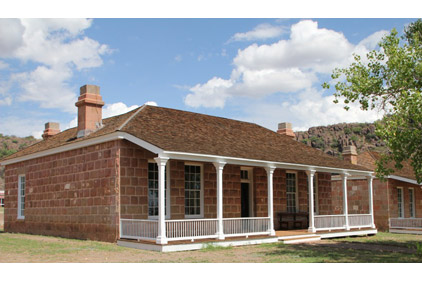National Park Service Treasures: Fort Davis
Stephen Chambers, Dallas architect, recently visited the historic restoration of Fort Davis, a treasure of the National Park Service. In the book, Texas Public Buildings of the 19th Century, Steve's favorite Texas Tech architecture professor, Willard B. Robinson, writes that the military played an enormous role in civilizing the wilderness, as well as having a spontaneous influence on the general development of communities in the state of Texas. Fort Davis is an exceptional example of these stations and is considered one of the best remaining examples of a frontier military post in the American Southwest. Named for Secretary of War Jefferson Davis, the post was located in a box canyon near Limpia Creek on the eastern side of the Davis Mountains, where weather remained fairly temperate and wood, water, grass, and building stone were plentiful. From 1854 until 1891, the fort’s import in history was as a key ‘Indian’ post to defend emigrants, mail and freight coaches, and travelers along the main route from El Paso to San Antonio, Texas. When the National Park Service acquired the property in 1962, neglect, vandalism, and the weather had already taken their toll on this national historical treasure.
Regardless of terrain, the layout of all these posts had similar arrangements, recalling plans of Roman military camps. Fort Davis follows the pattern: the most important buildings with their balanced forms and symmetrical openings face ‘the parade,’ demonstrating the desire for order in this rough country. According to Professor Robinson, in the late 1860s "an ambitious program of permanent stone construction was undertaken. Among the buildings to be built wholely or partially of limestone from a nearby quarry were the officers' quarters on the west side of the parade.

Recent Comments
Digitalization is very important for all businesses and...
I like the way this video was shot....
I agree that it's valuable to be aware...
That's a superb article, Incredible resource for construction...
Dental Care